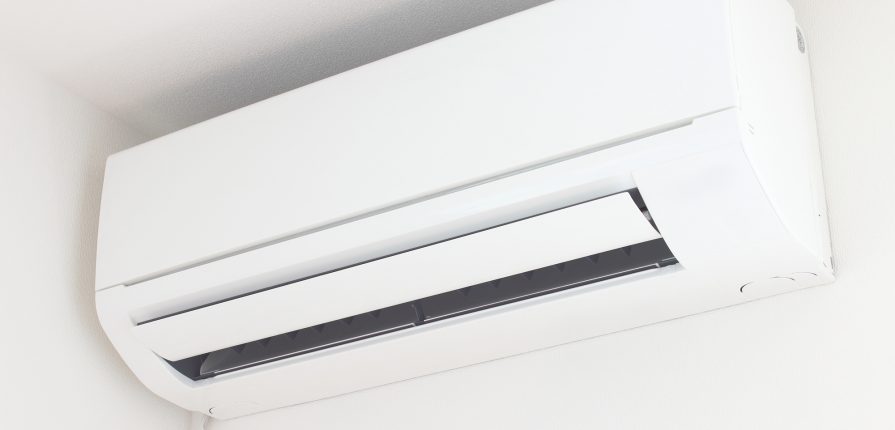How does air conditioning work?
Air Conditioning is a necessity when it comes to summer. With summers comes the scorching heat and humidity that you want to get away with at any cost. The rising mercury leaves lesser scope for you to wander in the open unless you have any urgency. Nevertheless, staying at home is not that relaxing thing either. Thankfully, you can have air conditioners installed at your home or workplace. They can surely beat the heat and get a cool retreat, in those unbearable hot and humid months.
While enjoying the cool breeze, have you ever thought about the working of your cooling source? If not, and if you are still inquisitive on how does air conditioning works, here is a simple breakdown of the cooling process it undergoes. But before that, it would be worthwhile to know about the refrigerant and the various components of an air conditioning machine.
Refrigerant
A refrigerant pumps through the cooling tubes just like blood in the humans and can change its state from gas to liquid. A unique substance, it accumulates heat from your interior and ejects it outdoors. Due to very low boiling point, it can also transform from liquid to vapor, which holds the key behind the functioning of the air conditioner. It however requires a compressor to travel across the cooling tubes. Most of the ACs available in the market nowadays use R-410, which is a combination of R-32 and R-125, all of which are HFC (hydrofluorocarbons) refrigerants. Many older ACs consist of HCFCs (hydrochlorofluorocarbons). After 1987 Montreal Protocol, the HCF refrigerants have been phased out to give way to HFCs.
Components of an Air Conditioner
Every AC unit (whether you have a Split System or a Ducted System) works with the help of four prime components:
1. Compressor
You can call the compressor as the “heart’ of the air conditioning system. It pumps the refrigerant through a copper loop in the different refrigeration parts of the machine. The refrigerant passes through the compressor as a low-pressure warm and transforms into high pressure hot vapor as it leaves the compressor.
2. Condenser
The hot refrigerant vapor enters the condenser from the compressor, where the condensing coils cools it down. These coils consist of thin metal fins, which conduct heat (as in a car radiator). The fan linked with the condenser throws air on the fins to cool the refrigerant vapor quickly. As a result, the hot vapor converts into hot liquid and proceeds towards the expansion valve at a high pressure. Notably, the compressor and the condenser (including coil and fan) altogether form condensing unit.
3. Expansion Valve
This component is actually responsible to perform the cooling job. The hot liquid refrigerant obtained from the condenser passes through a small opening at a high pressure from one side. It comes out from the other side as cold low-pressure mist. An air conditioner works on the principle that an expanded gas cools down, and the expansion valve performs this very task by disposing off its heat.
4. Evaporator Coil
The cold liquid released at low pressure from the expansion valve enters the evaporator coil of your air conditioner. This component sucks the air from the interior with the help of a blower and throws back the cool air into the room. The evaporator transfers the hot air generated from the interior to the refrigerant.
The working of your AC
Put into simple words, your air conditioner works on the law of physical conversion that states, “a liquid absorbs heat when converted to gas”.
- Abiding by the rule, the system uses a refrigerant to absorb the excess heat of the room.
- It then pumps this heat out to a closed set of coils with the help of pipes. This makes the refrigerant even hotter, leaving the air to cool down.
- Next, a fan attached with the evaporator transfers the air back inside the room.
- This cycle continues and as the time passes, it cools the rooms as per your preferred temperature.
- But the refrigerant is yet to cool down after absorbing the heat from the room. The fluid hence passes through the compressor.
- The compressor exerts pressures on this fluid/gas, tending the molecules to come closer.
- Next, the fluid passes through the condenser where its temperature drops significantly.
- The system repeats this cycle to recreate the cooling effect.
- The thermostat connected with the AC keeps a check at the room temperature. As the room acquires your desired cooling, the thermostat shuts off the system.
- When the room heats again, the thermostat restarts the air conditioner and the same process keeps repeating.
If you want to heat the room through your air conditioner, you can just reverse this entire process.
GlobalRez – The one-stop destination for complete AC solutions
Now that you are well aware of the components and working of the AC, you can identify any problem existing in your machine and probably may correct it. Still, the intervention of an expert is always a better alternate and this is where Globalrez comes to your assistance.
Be it to sort out the problem existing in air conditioner or you wish to upgrade to a brand new AC, we can help you out significantly. Feel free to contact us for satisfying AC supply & installation, and one of our representatives will attend you at the earnest.

